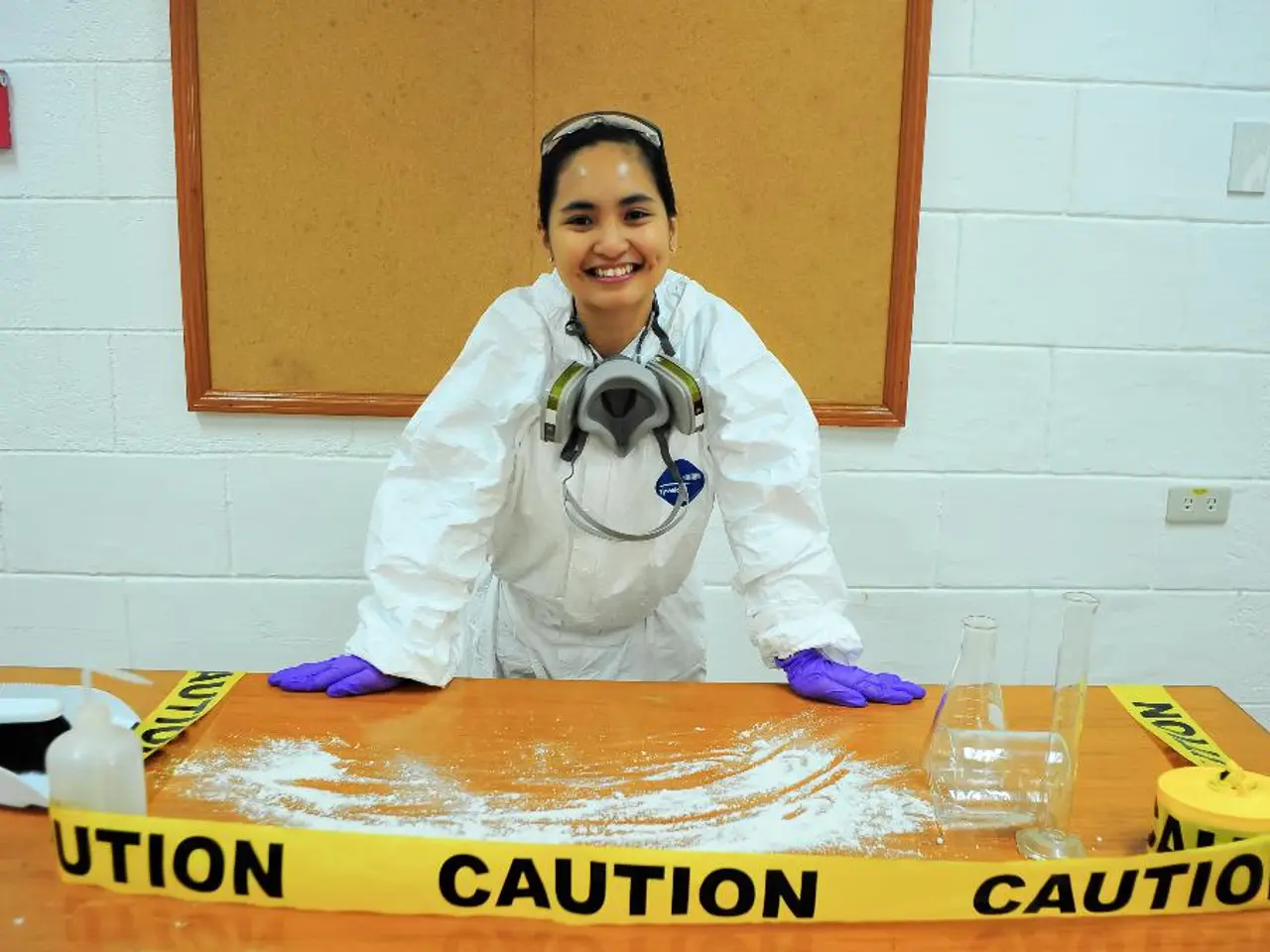Skin Irritation Due to Stress: Identifying Signs, Remedies, and precautions to take
Anxiety rash, a common skin condition, can be a source of additional stress and embarrassment for those experiencing it. This itchy rash, which may resemble hives, is often caused by anxiety rather than allergies or certain foods.
Cognitive behavioral therapy (CBT) and exposure response prevention are common forms of psychotherapy used to treat anxiety disorders. By helping change thought patterns, beliefs, and behaviors that cause anxiety, these therapies can be effective in managing anxiety rash.
To determine whether anxiety is causing a rash or if it is due to another cause, people can try to eliminate all other possible causes such as allergies, contact dermatitis, illness, skin conditions, or reactions to certain products.
Effective long-term coping techniques for managing anxiety and reducing stress to help prevent and treat anxiety rash include grounding exercises, controlled breathing, meditation, and seeking professional mental health support combined with appropriate skin care.
Grounding techniques, such as the 5-4-3-2-1 method, engage all five senses to bring attention to the present moment and reduce emotional overwhelm. Controlled breathing techniques, like focusing on the exhale, box breathing, or the 4-7-8 method, reduce anxiety by activating the parasympathetic nervous system.
Regular mindfulness meditation fosters long-term anxiety relief by helping individuals non-judgmentally observe and control their thoughts and sensations. An integrated approach involving dermatologists for skin care and mental health professionals for therapy or medication can prevent ongoing flare-ups and address psychological triggers effectively.
Skin care and avoiding known skin irritants can calm anxiety-induced skin reactions. Lifestyle adjustments, such as increasing physical activity, improving diet, and practicing relaxation techniques, contribute to sustained stress reduction and help break the cycle of stress-induced skin issues.
Medications like anti-anxiety or antidepressant medications may help relieve both emotional and physical anxiety symptoms. Antihistamine medication works to block the histamine response in the body, which can help prevent new hives from forming. Topical treatments and antihistamines may help relieve short-term symptoms of an anxiety rash.
If a rash worsens or does not respond to treatment, individuals need to consult a doctor. A rash can sometimes be a sign of a serious infection or severe allergic reaction, and people will need to seek help straight away if they have a rash with symptoms like covering most of the body, fever, difficulty breathing, blistering or open sores, pain, swelling or warmth around the rash, crusting, a red streak, or yellow or green discharge coming from the rash.
Managing anxiety may help prevent anxiety rash, and a range of lifestyle changes and coping strategies may help, such as taking regular meditation, using breathing exercises, taking part in yoga, engaging in regular exercise, understanding personal triggers, listening to music, eating a nutritious, balanced diet, getting regular, quality sleep, limiting alcohol and caffeine, counting to 10 slowly when feeling anxious, finding humor and laughing, focusing on replacing negative thoughts with positive ones, connecting with a local community, talking with friends, family, or a healthcare professional if feeling overwhelmed.
[1] Hafner, K., & Hofmann, S. G. (2014). Mindfulness-based interventions for anxiety disorders. Journal of Anxiety Disorders, 28(4), 428-439.
[2] Newman, D. K., & Hofmann, S. G. (2015). The empirical status of mindfulness-based therapy. Clinical Psychology Review, 40, 647-661.
[3] Smith, J. L., & Allan, W. D. (2017). Grounding techniques for stress and anxiety. Journal of Mental Health Counseling, 39(1), 52-62.
[4] Tsao, D. Y., & Koo, B. S. (2011). The role of the dermatologist in the management of anxiety disorders. Journal of Clinical Psychiatry, 72(11), 1516-1523.
[5] Wong, M. M., & Cavanagh, T. (2014). Mindfulness-based interventions for stress reduction: A systematic review and meta-analysis. Journal of Consulting and Clinical Psychology, 82(3), 325-333.
- Anxiety rash, similar to hives, can be a source of additional stress and embarrassment for those experiencing it.
- Cognitive behavioral therapy (CBT) and exposure response prevention are common forms of psychotherapy used to treat anxiety disorders.
- To determine whether anxiety is causing a rash or if it is due to another cause, people can try to eliminate all other possible causes.
- Effective long-term coping techniques for managing anxiety and reducing stress include grounding exercises, controlled breathing, meditation, and seeking professional mental health support.
- Grounding techniques, like the 5-4-3-2-1 method, engage all five senses and can reduce emotional overwhelm.
- Controlled breathing techniques can help reduce anxiety by activating the parasympathetic nervous system.
- Regular mindfulness meditation can help individuals non-judgmentally observe and control their thoughts and sensations for long-term anxiety relief.
- An integrated approach, involving dermatologists for skin care and mental health professionals for therapy or medication, can prevent ongoing flare-ups and address psychological triggers effectively.
- Medications like anti-anxiety or antidepressant medications and antihistamine medication may help relieve both emotional and physical symptoms of anxiety rash.
- Topical treatments and antihistamines may help relieve short-term symptoms of an anxiety rash, but if a rash worsens or does not respond to treatment, consulting a doctor is essential.
- Managing anxiety may help prevent anxiety rash, and a range of lifestyle changes and coping strategies may help, such as taking regular meditation, using breathing exercises, and practicing yoga.
- Research from sources like [1] and [2] supports the effectiveness of mindfulness-based interventions for anxiety disorders, while [3], [4], and [5] highlight the potential benefits of grounding exercises, controlled breathing, and mindfulness meditation for stress and anxiety reduction.




